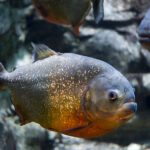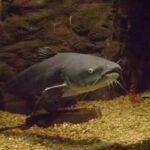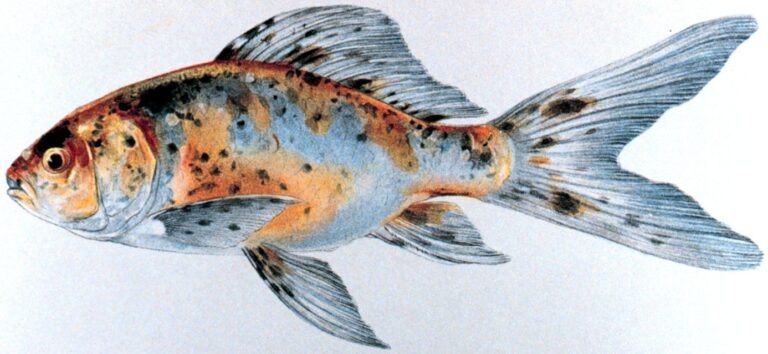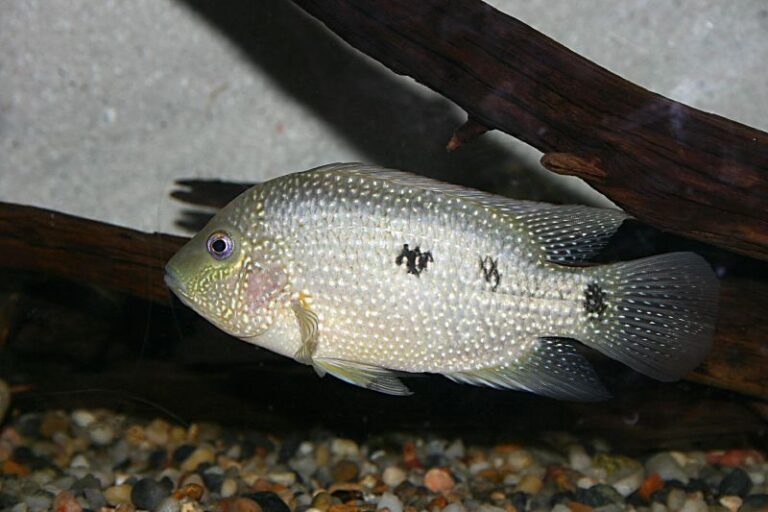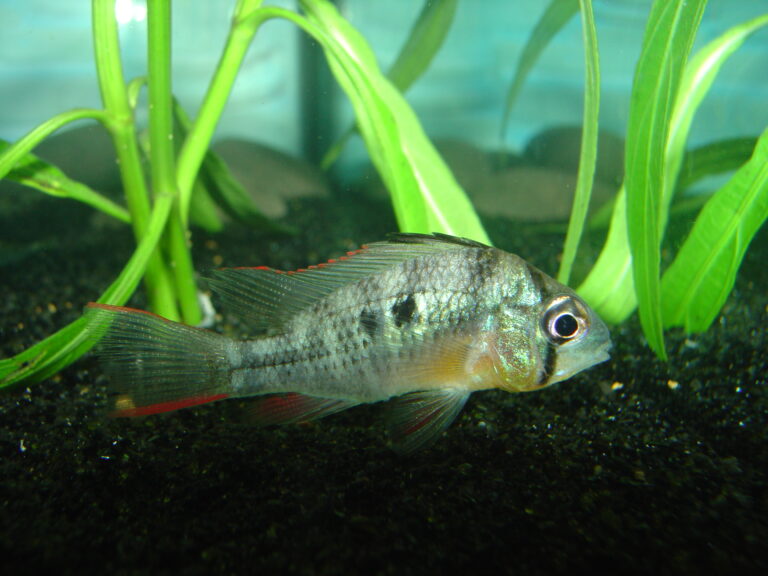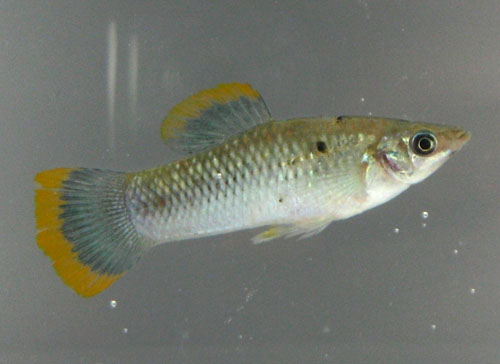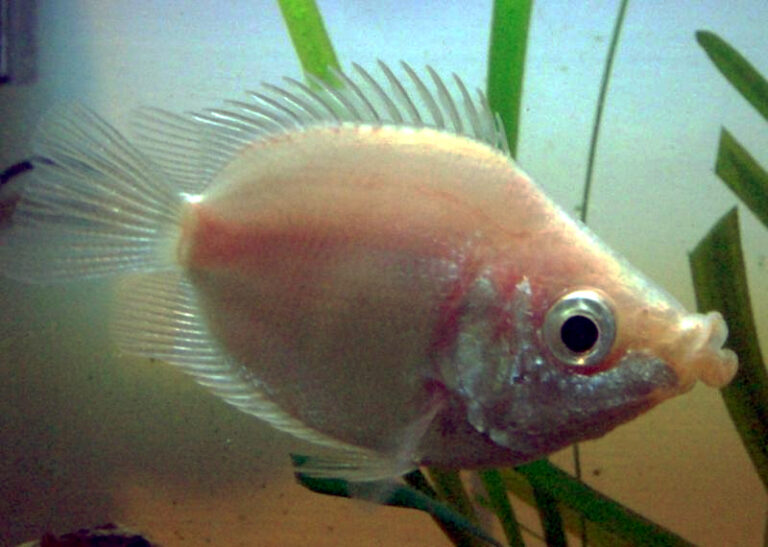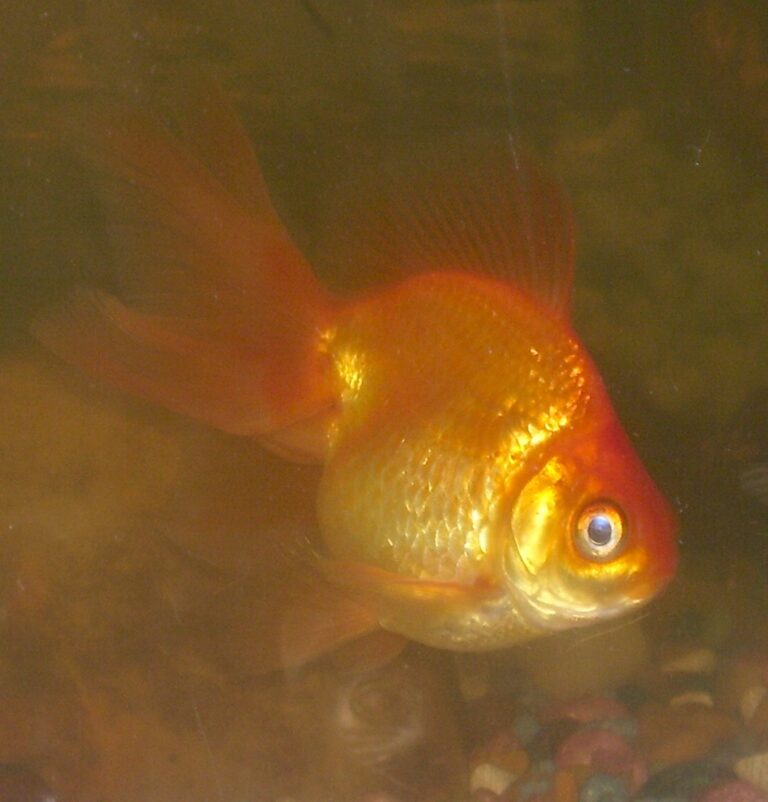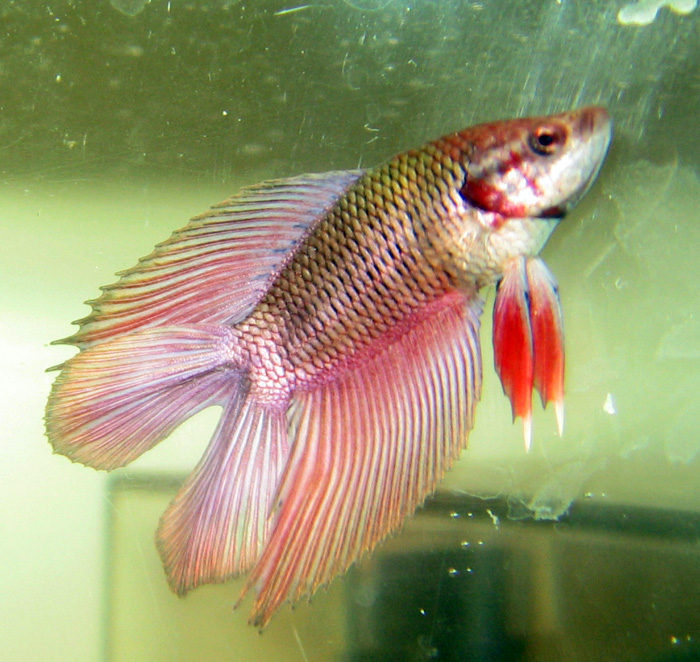Angelfish
By Ryan Maron | Last Modified: June 4, 2025
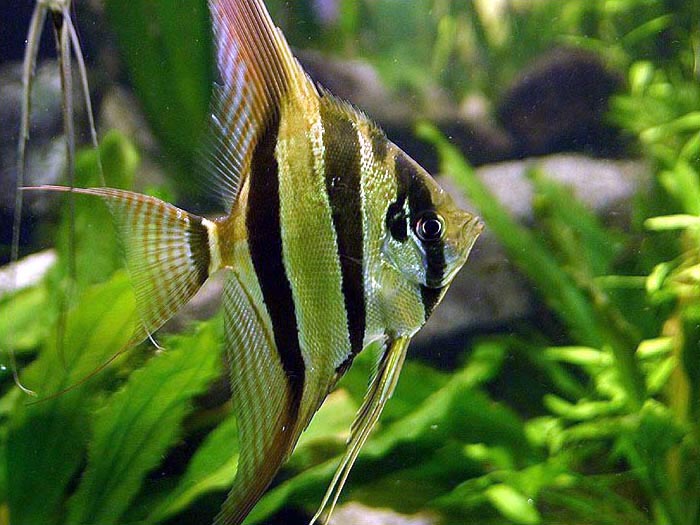
Angelfish represent one of the most recognizable and ecologically significant families of marine fish, encompassing over 85 species distributed across tropical and subtropical oceans worldwide. Known scientifically as members of the family Pomacanthidae, these vibrant reef dwellers play crucial roles as both grazers and predators within complex coral ecosystem food webs. Their distinctive compressed bodies, elongated dorsal and anal fins, and brilliant coloration patterns make angelfish among the most sought-after specimens for marine aquarists and underwater photographers alike.
The ecological importance of angelfish extends far beyond their aesthetic appeal. These fish serve as vital components of coral reef communities, with many species functioning as cleaners that remove algae and parasites from other fish, while others act as important seed dispersers for marine plants. Their feeding behaviors directly influence coral health and reef structure, making them keystone species in maintaining biodiversity within some of the world’s most threatened marine ecosystems. Understanding angelfish biology and behavior provides critical insights into reef conservation and the intricate relationships that sustain tropical marine environments.
| Feature | Details |
|---|---|
| Common Name | Angelfish |
| Scientific Name | Pomacanthidae family |
| Family | Pomacanthidae |
| Typical Size | 7-60 cm (3-24 inches), 0.1-4 kg |
| Habitat | Coral reefs, rocky outcrops |
| Diet | Omnivorous – algae, sponges, small invertebrates |
| Distribution | Tropical and subtropical oceans worldwide |
| Conservation Status | Varies by species – Least Concern to Near Threatened |
Taxonomy & Classification
The family Pomacanthidae encompasses approximately 85 recognized species of angelfish distributed across eight distinct genera. The most prominent genera include Pomacanthus, containing the larger species such as the French angelfish and gray angelfish, and Centropyge, which houses the smaller dwarf angelfish species. Holacanthus represents another significant genus, featuring species like the queen angelfish and rock beauty angelfish that are endemic to Atlantic waters.
Angelfish belong to the order Perciformes, the largest order of vertebrates, and are closely related to butterflyfish within the suborder Percoidei. Molecular phylogenetic studies have revealed that the Pomacanthidae family diverged from butterflyfish approximately 50 million years ago during the Eocene epoch. This evolutionary separation resulted in distinct morphological adaptations, particularly the development of the characteristic preopercular spine that distinguishes all angelfish species.
The taxonomic classification continues to evolve as genetic analysis reveals cryptic species and clarifies relationships between geographically separated populations. Recent studies have identified several species complexes within the genus Centropyge, where morphologically similar fish from different ocean basins represent distinct evolutionary lineages. These findings have significant implications for conservation efforts and aquaculture breeding programs.
Physical Description
Angelfish possess highly compressed, disc-shaped bodies that enable efficient navigation through complex coral formations and rocky crevices. Their most distinctive feature is the prominent spine located on the preopercle, which can be erected defensively and often bears additional smaller spines. This anatomical characteristic serves as the primary diagnostic feature separating angelfish from their butterflyfish relatives.
The size variation within the Pomacanthidae family is remarkable, ranging from the diminutive Centropyge argi at 7 centimeters to the massive Pomacanthus maculosus, which can exceed 50 centimeters in length. Coloration patterns represent one of the most striking aspects of angelfish biology, with many species displaying brilliant yellows, blues, oranges, and purples arranged in intricate stripes, spots, or solid patches. These color patterns often serve multiple functions, including species recognition, territorial displays, and predator deterrence.
Many angelfish species exhibit dramatic ontogenetic color changes, where juveniles display entirely different coloration patterns compared to adults. The juvenile gray angelfish, for example, bears bright yellow stripes on a black background, while adults develop a uniform gray coloration with subtle patterning. This phenomenon, known as dichromatism, likely evolved as a mechanism to reduce intraspecific competition between age classes and facilitate different ecological roles throughout the life cycle.
Habitat & Distribution
Angelfish inhabit tropical and subtropical marine environments across all major ocean basins, with the highest species diversity concentrated in the Indo-Pacific region. The Caribbean Sea and western Atlantic Ocean support approximately 15 species, while the Indo-Pacific houses over 70 species distributed from the Red Sea to the central Pacific islands. This distribution pattern reflects the geological history of coral reef formation and the evolutionary radiation of marine fish communities.
Coral reefs represent the primary habitat for most angelfish species, though many also utilize rocky outcrops, seamounts, and artificial structures such as shipwrecks and oil platforms. Depth preferences vary considerably among species, with some dwarf angelfish inhabiting shallow lagoons at depths of 2-5 meters, while others like Centropyge hotumatua are found exclusively on deep reef slopes at depths exceeding 100 meters. The vertical distribution often correlates with feeding specialization and competition avoidance strategies.
Habitat complexity plays a crucial role in angelfish ecology, as the three-dimensional structure of coral reefs provides numerous microhabitats for feeding, shelter, and reproduction. Studies have demonstrated that angelfish abundance and species richness correlate positively with coral diversity and structural complexity. This relationship has significant implications for conservation, as coral reef degradation threatens angelfish populations worldwide through habitat loss and simplification.
Diet & Feeding Behavior
Angelfish exhibit diverse feeding strategies that reflect their evolutionary adaptation to exploit various food resources within coral reef ecosystems. Most species are omnivorous, consuming a combination of algae, sponges, tunicates, bryozoans, and small invertebrates. However, feeding specialization has evolved within different genera, with some species becoming highly specialized sponge feeders while others focus primarily on algal grazing.
The feeding apparatus of angelfish includes specialized pharyngeal teeth that enable efficient processing of tough prey items such as sponges and coralline algae. Large species like Pomacanthus paru possess powerful jaws capable of excavating sponges from crevices, while smaller Centropyge species use their protrusible mouths to pick individual polyps and algal filaments from coral surfaces. This morphological diversity allows multiple angelfish species to coexist within the same reef system through resource partitioning.
Temporal feeding patterns vary among species, with some being primarily diurnal feeders while others exhibit crepuscular activity peaks. Many angelfish species establish cleaning stations where they remove ectoparasites and dead tissue from other fish species, providing an important ecological service within reef communities. This behavior is particularly well-documented in the Pacific cleaner angelfish Centropyge bicolor, which maintains territories specifically for cleaning activities.
Behavior & Adaptations
Angelfish display complex social behaviors that vary significantly among species and environmental contexts. Most species are territorial, defending feeding areas and shelter sites from conspecifics and other reef fish. Territory size typically correlates with body size and resource availability, with larger species maintaining territories of several hundred square meters while dwarf angelfish may defend areas as small as 10-20 square meters.
Pair bonding represents an important social adaptation in many angelfish species, particularly within the genus Pomacanthus. These monogamous pairs maintain stable relationships over multiple breeding seasons and jointly defend territories against intruders. Pair formation involves complex courtship displays that include color changes, synchronized swimming patterns, and acoustic signals produced through specialized sonic muscles.
Cleaning behavior represents one of the most fascinating adaptations observed in angelfish communities. Juvenile angelfish of several species, including Pomacanthus semicirculatus and Holacanthus ciliaris, establish cleaning stations where they remove parasites and dead tissue from larger fish. This mutualistic relationship provides nutrition for the angelfish while offering health benefits to their clients. As these fish mature, they typically transition from cleaning behavior to standard foraging activities.
The ability to rapidly change color patterns serves multiple behavioral functions in angelfish ecology. Aggressive displays often involve darkening of coloration and erection of fins to appear larger and more threatening. Conversely, submissive individuals may display pale coloration patterns that signal non-threatening intentions to dominant fish. Some species also exhibit rapid color changes during courtship and spawning activities.
Reproduction & Life Cycle
Angelfish reproduction follows the typical pattern of most marine reef fish, with external fertilization and pelagic larval development. Most species are protogynous hermaphrodites, beginning life as females and potentially transforming into males under appropriate social and environmental conditions. This reproductive strategy maximizes fitness by allowing individuals to function as females when small and transition to males when large enough to successfully defend territories and attract multiple mates.
Spawning typically occurs during warmer months when water temperatures and photoperiod conditions are optimal for larval survival. Pair-bonding species engage in elaborate courtship rituals that may last several days before spawning. The actual spawning event involves the pair swimming upward in the water column while simultaneously releasing eggs and sperm. This behavior, known as broadcast spawning, maximizes fertilization success and disperses offspring away from parental territories.
Larval development occurs in the open ocean, where angelfish larvae undergo significant morphological changes during the approximately 30-40 day pelagic phase. Early larvae are characterized by elongated fin filaments and spines that likely serve as predator deterrents. The transition from pelagic larvae to benthic juveniles, known as settlement, represents a critical period when young angelfish must locate suitable reef habitat and establish territories.
Juvenile angelfish often occupy different habitats than adults, with many species settling in shallow seagrass beds or rubble areas before eventually moving to adult reef territories. This ontogenetic habitat shift reduces competition with adults and may provide access to different food resources during critical growth periods. Growth rates vary among species, with smaller dwarf angelfish reaching sexual maturity within 12-18 months, while larger species may require 3-5 years to mature.
Predators & Threats
Angelfish face predation pressure from various marine predators throughout their life cycle, with vulnerability patterns changing dramatically from larval to adult stages. Pelagic larvae are consumed by planktivorous fish, jellyfish, and other zooplankton predators during their oceanic phase. Newly settled juveniles face intense predation from resident reef predators including groupers, snappers, moray eels, and cephalopods.
Adult angelfish utilize multiple anti-predator strategies to survive in predator-rich reef environments. Their compressed body shape allows rapid escape into coral crevices and rocky refuges where larger predators cannot follow. The prominent preopercular spine and dorsal fin spines serve as defensive weapons that can inflict significant injury on attacking predators. Many species also possess toxic or unpalatable flesh that deters consumption by predators that have learned to avoid these prey items.
Cryptic coloration and behavior represent additional predator avoidance mechanisms observed in angelfish communities. Juvenile coloration patterns often provide camouflage against specific habitat backgrounds, while adult patterns may function as disruptive coloration that makes body outline recognition difficult for visual predators. Some species exhibit color changes in response to predator presence, rapidly shifting to darker or more cryptic patterns when threatened.
Human activities represent increasingly significant threats to angelfish populations worldwide. Coral reef degradation from climate change, pollution, and coastal development directly impacts angelfish habitat availability and quality. The marine aquarium trade harvests millions of angelfish annually, with some species experiencing population declines in heavily collected areas. Additionally, cyanide fishing practices used to stun fish for live capture cause significant mortality in both target and non-target species.
Conservation Status
The conservation status of angelfish species varies considerably across the family, with most species currently classified as Least Concern by the International Union for Conservation of Nature. However, several species face increasing pressure from habitat degradation and collection for the aquarium trade. The IUCN has identified habitat loss as the primary threat to angelfish populations, particularly species with restricted distributions or specific habitat requirements.
Climate change poses a significant long-term threat to angelfish communities through its impacts on coral reef ecosystems. Rising ocean temperatures cause coral bleaching events that reduce habitat complexity and food availability for angelfish populations. Ocean acidification may also impact the calcareous organisms that many angelfish species depend upon for food, potentially altering community structure and species composition.
The marine aquarium trade represents both an economic opportunity and conservation challenge for angelfish management. While sustainable collection practices can provide economic incentives for reef conservation, overharvesting and destructive collection methods threaten local populations. Several organizations now promote sustainable aquarium fish collection practices and captive breeding programs to reduce pressure on wild populations.
Regional conservation efforts have established marine protected areas that provide refuge for angelfish populations and their coral reef habitats. Studies from Caribbean marine reserves demonstrate that angelfish abundance and average size increase significantly within protected areas compared to fished regions. These findings support the effectiveness of spatial protection measures for angelfish conservation and reef ecosystem management.
Human Interaction
The relationship between humans and angelfish extends back centuries, with these colorful reef fish featuring prominently in the cultures of many tropical coastal communities. Indigenous peoples throughout the Caribbean and Pacific regions have traditionally harvested angelfish for food, though they typically represent a minor component of subsistence fisheries compared to larger species. Modern interactions focus primarily on ecotourism, recreational diving, and the marine aquarium trade.
Marine aquarium keeping represents the most significant form of human interaction with angelfish, generating millions of dollars in annual trade value. Popular species include the flame angelfish, coral beauty angelfish, and various dwarf angelfish species that adapt well to captive conditions. However, successful angelfish husbandry requires specialized knowledge of water chemistry, nutrition, and social dynamics that challenge many aquarium enthusiasts.
Ecotourism centered on coral reef diving and snorkeling provides important economic opportunities for coastal communities throughout angelfish distribution ranges. These fish rank among the most photographed and sought-after species for underwater photographers and recreational divers. The economic value of living angelfish on coral reefs often exceeds their value as collected specimens, providing economic incentives for conservation.
Scientific research on angelfish has contributed significantly to our understanding of marine ecology, behavior, and evolution. Studies of angelfish cleaning behavior, territoriality, and reproductive strategies have provided insights applicable to broader questions in behavioral ecology and conservation biology. As described in our guide on types of ocean fishing, angelfish occasionally appear in recreational fishing catches, though they are not typically targeted species.
Interesting Facts
Angelfish possess remarkable cognitive abilities that challenge traditional assumptions about fish intelligence. Research has demonstrated that several species can recognize individual conspecifics and maintain complex social relationships over extended periods. Queen angelfish have been observed using tools, manipulating coral fragments to access hidden prey items in a behavior previously thought to be limited to higher vertebrates.
The longevity of angelfish species varies dramatically, with some dwarf species living only 5-7 years while larger species may survive for several decades. The oldest recorded angelfish was a French angelfish estimated to be over 30 years old based on otolith aging techniques. This longevity has important implications for population dynamics and recovery potential following disturbance events.
Color vision in angelfish surpasses that of most vertebrates, with some species possessing tetrachromatic vision that includes ultraviolet sensitivity. This enhanced color perception likely facilitates species recognition, mate selection, and foraging efficiency in the visually complex coral reef environment. The ability to perceive ultraviolet patterns invisible to humans may explain some of the complex social behaviors observed in angelfish communities.
Several angelfish species exhibit remarkable site fidelity, with individuals maintaining the same territory for years or even decades. Researchers have documented individual French angelfish returning to the exact same coral head after experimental displacement over distances of several kilometers. This homing ability suggests sophisticated spatial memory and navigation capabilities that enable precise orientation within complex reef landscapes.
The acoustic communication abilities of angelfish remain largely unexplored, though preliminary studies suggest that many species produce sounds during social interactions. These vocalizations, generated through specialized sonic muscles, may play important roles in territorial defense, mate attraction, and species recognition. Advanced hydrophone technology is beginning to reveal the complexity of underwater acoustic communication in reef fish communities.
Frequently Asked Questions
Can angelfish be successfully bred in captivity?
Captive breeding of angelfish presents significant challenges due to their complex reproductive requirements and pelagic larval development. While several dwarf angelfish species have been successfully bred in specialized facilities, the lengthy larval period and specific nutritional requirements make commercial breeding difficult. Most aquarium angelfish are still collected from wild populations, though advances in aquaculture technology are improving breeding success rates for some species.
What is the difference between freshwater and marine angelfish?
Freshwater angelfish belong to the family Cichlidae and are native to South American river systems, while marine angelfish are members of the family Pomacanthidae found in coral reef environments. Despite sharing the common name “angelfish,” these groups are not closely related and evolved their similar body shapes independently. Marine angelfish display much greater species diversity and more complex coloration patterns than their freshwater counterparts.
How do angelfish contribute to coral reef health?
Angelfish play multiple ecological roles that benefit coral reef ecosystems. Many species consume algae that would otherwise overgrow and smother corals, while others feed on sponges and other organisms that compete with corals for space. Cleaning behavior performed by some angelfish species helps maintain the health of other reef fish by removing parasites and dead tissue. Their role as both predators and prey also maintains important energy transfer pathways within reef food webs.
Why do juvenile and adult angelfish look so different?
The dramatic color changes observed in many angelfish species during development serve multiple ecological functions. Juvenile coloration patterns often provide camouflage or mimic other species to avoid predation, while adult patterns facilitate species recognition and territorial behavior. This strategy, known as ontogenetic color change, allows different life stages to occupy different ecological niches and reduces competition between juveniles and adults of the same species.
Conclusion
Angelfish represent one of the most ecologically important and visually spectacular components of coral reef ecosystems worldwide. Their diverse feeding strategies, complex social behaviors, and critical roles in maintaining reef health make them essential species for ecosystem function and stability. As coral reefs face increasing threats from climate change and human activities, understanding and protecting angelfish populations becomes crucial for broader marine conservation efforts. The continued study of these remarkable fish will undoubtedly reveal new insights into marine ecology while highlighting the urgent need for comprehensive reef protection strategies.
Share The Article:
More Fish Species:
-
Shubunkin Goldfish
The Shubunkin Goldfish (Carassius auratus) represents one of the most popular and visually striking varieties of goldfish kept in…
-
Texas Cichlid
The Texas Cichlid (Herichthys cyanoguttatus) stands as one of North America’s most distinctive freshwater fish species, representing the sole…
-
Bolivian Ram
The Bolivian Ram (Mikrogeophagus altispinosus) stands as one of South America’s most captivating cichlid species, representing a prime example…
-
Sailfin Molly
The Sailfin Molly stands as one of the most distinctive freshwater fish species in both wild ecosystems and aquarium…
-
Gold Dust Molly
The Gold Dust Molly (*Poecilia sphenops*) represents one of the most popular and visually striking freshwater aquarium fish available…
-
Green Swordtail
The Green Swordtail (Xiphophorus hellerii) represents one of the most recognizable and ecologically significant freshwater fish species in both…
Discover
-
Why Stoner Fish Catch is Different: Unusual Angling Tactics
Let’s face it – some fish just act plain weird. Whether you’re an experienced angler or just starting out,…
-
Ice Fishing Techniques for Anglers in 2025
Last January, I was out on Higgins Lake during that brutal cold snap – you remember, when it dropped…
-
Best Time to Go Fishing: Timing Tips for Bigger Catches
If there’s one question I get asked more than any other, it’s about timing. When should you cast that…
-
Crappie Fishing Guide for Beginners | 2025
Crappie fishing might just be one of the most rewarding experiences for new anglers. These popular panfish are abundant,…
-
7 Unusual Ways to Catch Trout in Lakes (That Most Anglers Miss)
Chasing trout in lakes can be maddeningly difficult. Trust me, I’ve spent countless mornings staring at a dead rod…
-
Mastering Fishing Casting Techniques: Complete Guide
Have you ever watched someone cast their line with perfect precision while you struggle to avoid tangling yours in…
Discover
-
Kissing Gourami
The Kissing Gourami (*Helostoma temminckii*) stands as one of the most distinctive and recognizable freshwater fish species in both…
-
Fantail Goldfish
The Fantail Goldfish represents one of the most recognizable and beloved fancy goldfish varieties in the aquarium trade worldwide….
-
Double Tail Betta
The Double Tail Betta, scientifically known as Betta splendens, represents one of the most distinctive and captivating variants within…
-
Shore Fishing for Beginners: 5 Odd Techniques That Actually Work
I’ve spent more mornings than I can count standing on the shores of Michigan lakes watching boats drift by,…
-
Basking Shark
The Basking Shark stands as one of the ocean’s most magnificent gentle giants, representing the second-largest fish species on…
-
Yellow Bullhead
The Yellow Bullhead (*Ameiurus natalis*) represents one of North America’s most widespread and ecologically significant freshwater catfish species. This…





